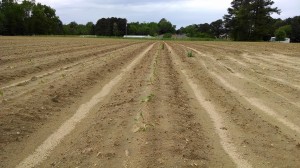Tobacco Insect Scouting Update. May 2, 2014
go.ncsu.edu/readext?296952
en Español / em Português
El inglés es el idioma de control de esta página. En la medida en que haya algún conflicto entre la traducción al inglés y la traducción, el inglés prevalece.
Al hacer clic en el enlace de traducción se activa un servicio de traducción gratuito para convertir la página al español. Al igual que con cualquier traducción por Internet, la conversión no es sensible al contexto y puede que no traduzca el texto en su significado original. NC State Extension no garantiza la exactitud del texto traducido. Por favor, tenga en cuenta que algunas aplicaciones y/o servicios pueden no funcionar como se espera cuando se traducen.
Português
Inglês é o idioma de controle desta página. Na medida que haja algum conflito entre o texto original em Inglês e a tradução, o Inglês prevalece.
Ao clicar no link de tradução, um serviço gratuito de tradução será ativado para converter a página para o Português. Como em qualquer tradução pela internet, a conversão não é sensivel ao contexto e pode não ocorrer a tradução para o significado orginal. O serviço de Extensão da Carolina do Norte (NC State Extension) não garante a exatidão do texto traduzido. Por favor, observe que algumas funções ou serviços podem não funcionar como esperado após a tradução.
English
English is the controlling language of this page. To the extent there is any conflict between the English text and the translation, English controls.
Clicking on the translation link activates a free translation service to convert the page to Spanish. As with any Internet translation, the conversion is not context-sensitive and may not translate the text to its original meaning. NC State Extension does not guarantee the accuracy of the translated text. Please note that some applications and/or services may not function as expected when translated.
Collapse ▲
Recently transplanted tobacco in grower standard plots. Photo: Hannah Burrack
This summer, we have begun a new project focussed on implementing integrated pest management (IPM) practices for insects in commercial tobacco fields. This project was inspired by observations during our GAP training sessions and results from county extension agent surveys that suggested that overall use of scouting to make insect management decisions was relatively low. We believe that making insect management choices based on scouting has the potential to reduce pesticide use, to potentially reduce grower cost, and to potentially reduce pesticide residues in cured leaf. This project is designed to determine if these beliefs are justified.
In order to identify the reasons why relatively few growers are scouting for insect pests, we have set up research fields at three locations throughout the state, two in eastern NC and one in the Piedmont, where we will compare insect populations in grower standard fields (where the growers we cooperate make all of the insect management decisions) and insect populations in fields we manage through scouting, our IPM plots. We will be sharing this information at the Tobacco Portal each week.
Our first two fields were transplanted this week, and we made our first scouting visit today. Our other two fields have not yet transplanted, so we will add scouting information for them in later updates.
Scouting Report, Eastern 1 – Grower Standard Field
| Insect observation | No. aphid infested plants | Flea beetles/plant | Percent tobacco budworm infestation | Hornworms/plant | Percent cutworm damaged plants | Other insects |
| Treatment needed? | 0 – No treatment | 0 – No treatment | 0 – No treatment | 0 – No treatment | 0 – No treatment | 0 – No treatment |
Scouting Report, Eastern 2 – IPM Field
| Insect observation | No. aphid infested plants | Flea beetles/plant | Percent tobacco budworm infestation | Hornworms/plant | Percent cutworm damaged plants | Other insects |
| Treatment needed? | 0 – No treatment | 0.02 – No treatment | 0 – No treatment | 0 – No treatment | 0 – No treatment | 0 – No treatment |
Notes: The one flea beetle observed in the IPM field was sluggish and had not caused any damage. Plants in both fields were treated with imidacloprid for aphid and flea beetle control in the greenhouse prior to transplant. We choose to keep these treatment even in IPM plots because it is so common in North Carolina. In a typical year, 98% of the conventional tobacco acres grown in state are treated with this material in the greenhouse.
More information
How can we measure insect management changes in tobacco? – Entomology Portal


